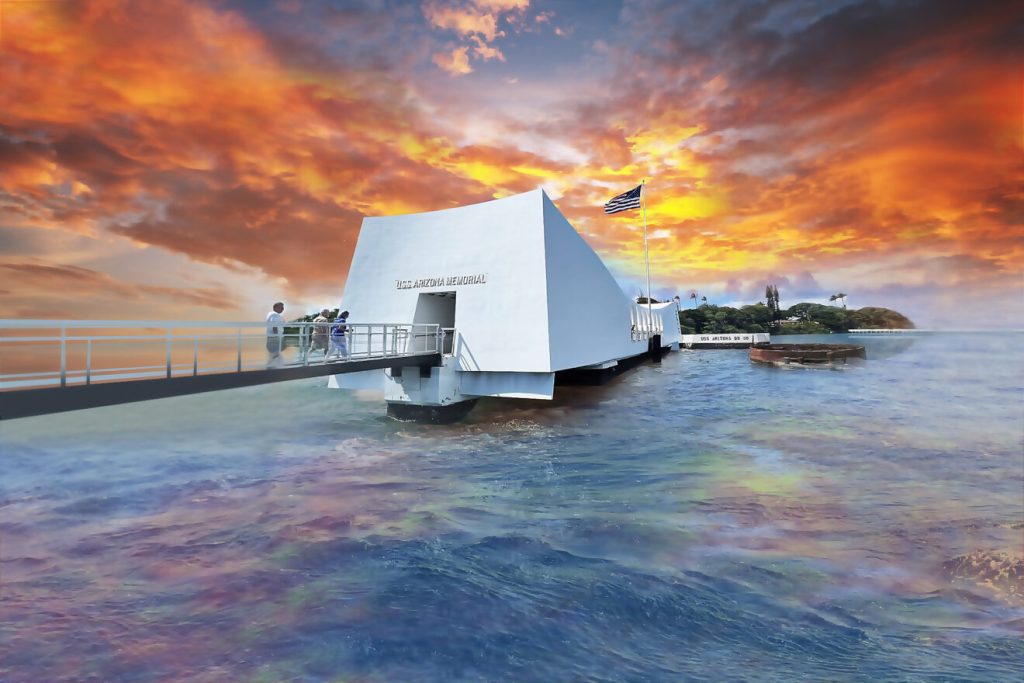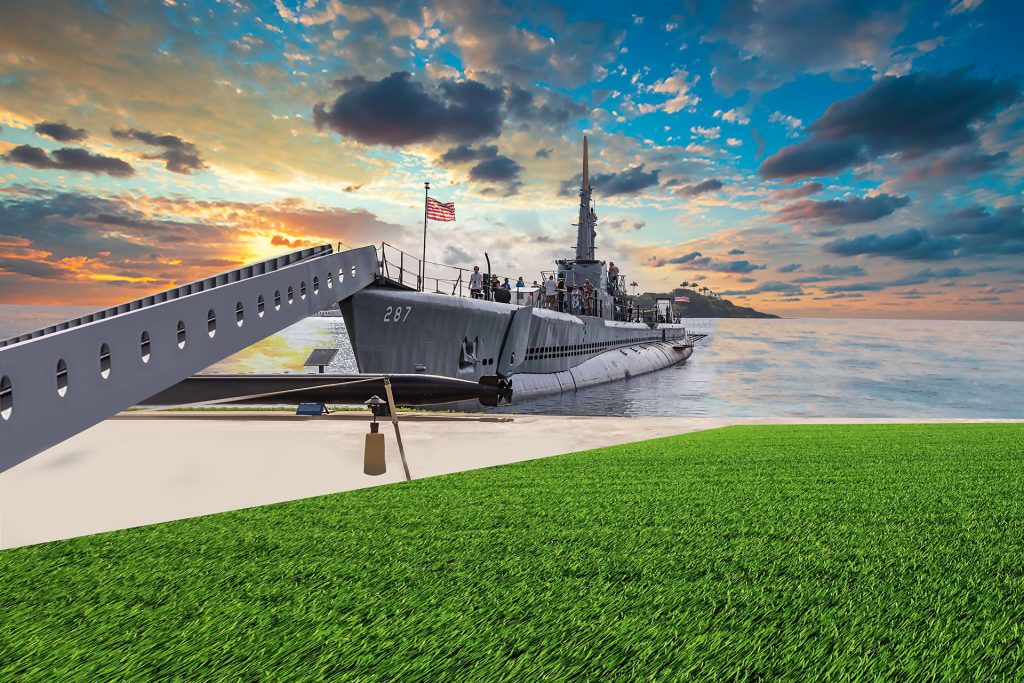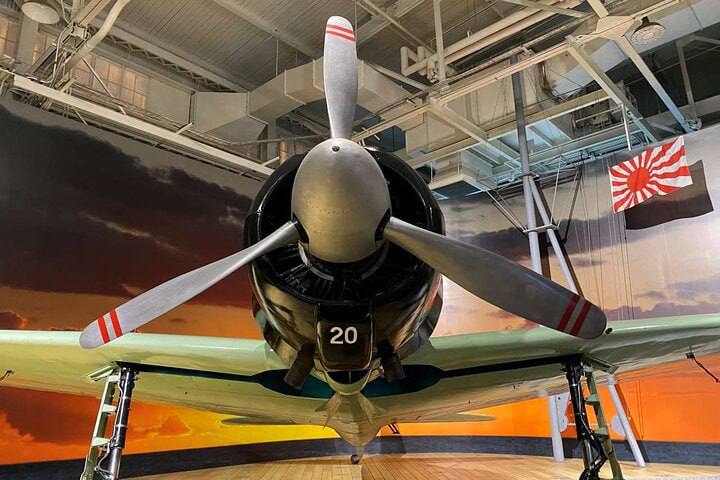Maui’s Most Famous Attractions
Maui’s Most Famous Attractions
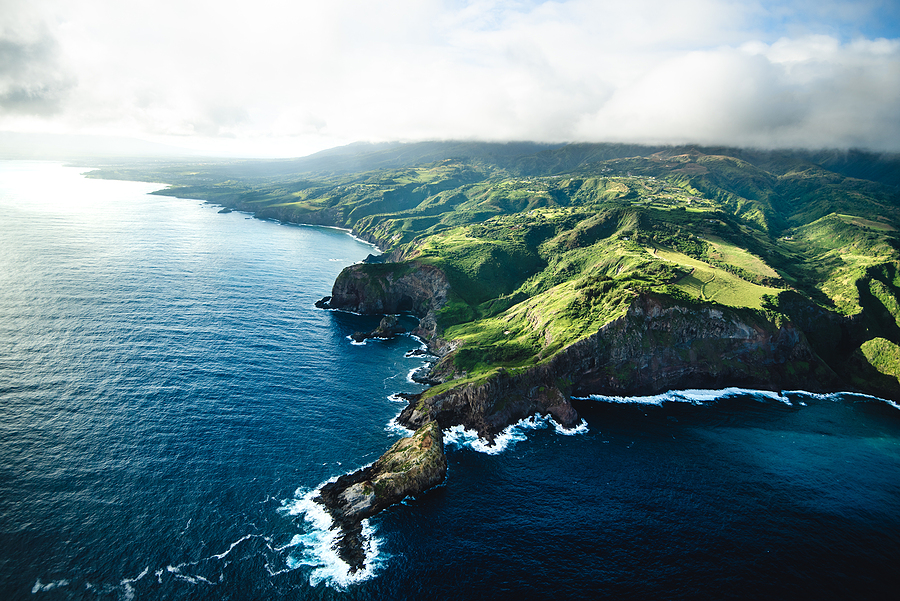
Beautiful Aerial View of Tropical Island Paradise Nature Scene of Maui Hawaii On Clear Sunny Day with Vibrant Blue Ocean Water and Waves and Lush Green Mountain Scenic Landscape
Alexander & Baldwin Sugar Museum
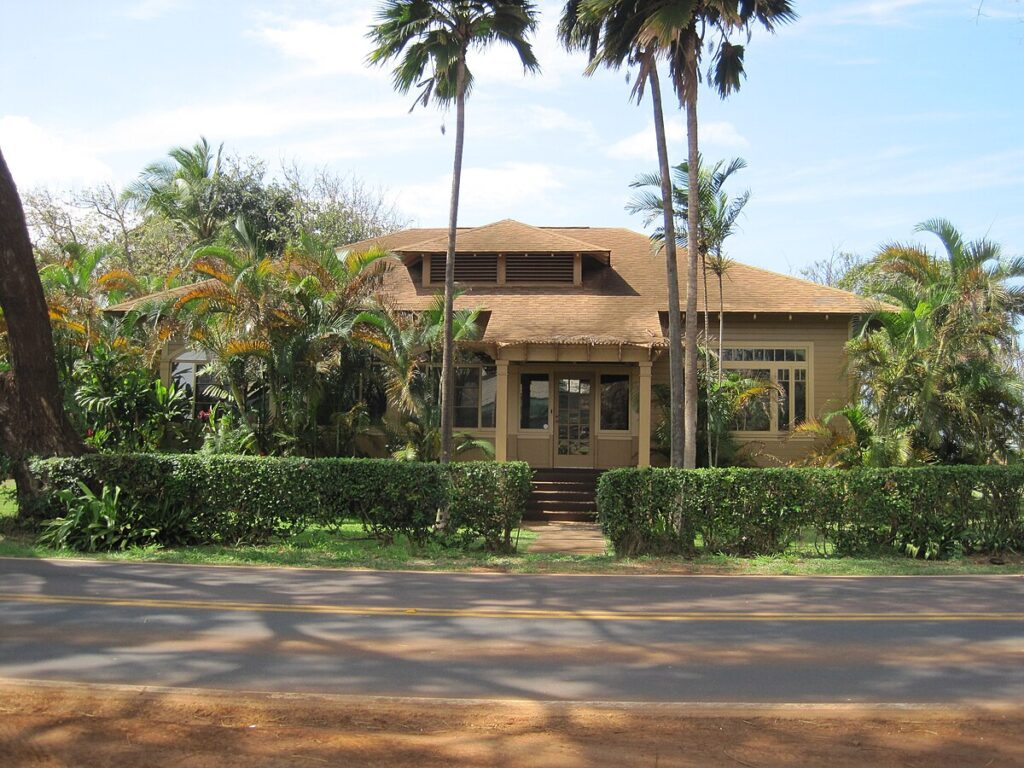
Nestled on the charming island of Maui, the Alexander & Baldwin Sugar Museum offers visitors an intriguing journey into Hawaii's storied past.
Whether you’re a history enthusiast, a cultural explorer, or simply curious about the story behind Maui’s iconic fields, the Alexander & Baldwin Sugar Museum is a must-visit destination. It’s a place where the history of hard work, innovation, and multiculturalism comes alive, offering insights into the sweet legacy that helped define Hawaii.
The Story Behind the Museum: Sugar and Hawaii
The Rise of the Sugar Industry
Sugarcane cultivation in Hawaii began in the early 19th century, transforming the islands into a global agricultural hub. By the late 1800s, sugar had become Hawaii's most important crop, driving the economy and attracting immigrants from around the world to work on the plantations. The Alexander & Baldwin partnership, formed in 1870 by Samuel T. Alexander and Henry Perrine Baldwin, played a crucial role in this transformation. Their innovation in irrigation systems and plantation management laid the foundation for Hawaii's thriving sugar industry. The museum is housed in a historic plantation building, offering an authentic setting to explore the rich history of sugarcane cultivation and its profound impact on Maui and beyond.
What to Expect at the Museum
Engaging Exhibits
The Alexander & Baldwin Sugar Museum features six main exhibit rooms, each dedicated to a different aspect of sugarcane production and plantation life. These exhibits provide a comprehensive look at the industry, from the fields to the mill and beyond.
The Geography Room: Learn about the environmental conditions that made Hawaii ideal for growing sugarcane, including its volcanic soil, abundant sunshine, and irrigation innovations.
The Plantation Room: Step into the lives of plantation workers through artifacts, photographs, and stories that highlight the diverse cultures that shaped the workforce, including immigrants from China, Japan, the Philippines, Portugal, and Puerto Rico.
The Mill Room: Discover the inner workings of a sugar mill, with displays of vintage equipment and explanations of the process of turning raw sugarcane into refined sugar.
The Irrigation Room: Explore how Alexander & Baldwin revolutionized agriculture with their pioneering irrigation system, which diverted water from Maui's rainy eastern slopes to the arid plains of Pu'unene.
The Field Work Room: Gain an appreciation for the labor-intensive process of cultivating and harvesting sugarcane, featuring tools, machinery, and personal accounts from workers.
The Water Room: Understand the critical role water played in the industry, including its management, distribution, and challenges.
Outdoor Displays
The museum's outdoor exhibits include large-scale machinery and equipment used in sugar production, such as a towering steam locomotive and other vintage tools. These artifacts offer a tangible connection to the past, allowing visitors to imagine the immense effort that went into running a plantation.
-A Celebration of Multiculturalism
The sugar industry didn't just shape Hawaii's economy; it also created a multicultural society that continues to define the islands today. Immigrants who came to work on the plantations brought their traditions, languages, and cuisines, creating a melting pot of cultures. The museum honors this legacy by showcasing the contributions of these communities and the enduring impact of plantation life on Hawaii's cultural fabric.
Visitors can delve into stories of resilience, cooperation, and the blending of diverse traditions, gaining a deeper understanding of how Hawaii became the unique cultural tapestry it is today.
Why Visit the Alexander & Baldwin Sugar Museum?
A Journey Through Time
The museum offers a fascinating journey into a pivotal era in Hawaii's history. It's a chance to step back in time and experience what life was like on a sugar plantation, from the innovation of irrigation systems to the daily lives of workers.
A Deeper Connection to Maui
For visitors to Maui, the museum provides a meaningful connection to the island's past. As you drive through fields of green sugarcane or enjoy local treats like shave ice and malasadas, understanding the history behind these landscapes and traditions adds depth to your experience.
An Educational Adventure for All Ages
Whether you're traveling with family, friends, or solo, the museum offers engaging exhibits for visitors of all ages. Kids will enjoy seeing the large outdoor machinery, while adults can appreciate the rich history and cultural significance detailed in the exhibits.
Tips for Your Visit
Location and Hours
The Alexander & Baldwin Sugar Museum is conveniently located in Pu'unene, just a short drive from Kahului Airport. It's a great stop to include in your Maui itinerary, whether you're exploring the island's central region or heading out to its famous beaches.
Plan Ahead
To make the most of your visit, plan to spend about 1-2 hours exploring the museum and its exhibits. Guided tours are available for groups, offering a more in-depth experience.
Combine with Nearby Attractions
Pair your visit to the museum with other nearby attractions, such as the Maui Tropical Plantation or a scenic drive through the island's picturesque countryside.
Preserving the Legacy
The Alexander & Baldwin Sugar Museum isn't just about looking back—it's about preserving the legacy of Hawaii's sugar industry for future generations. Through its exhibits, educational programs, and outreach efforts, the museum ensures that this vital chapter of Hawaii's history remains alive and accessible to all.
By visiting the museum, you're supporting this mission and helping to keep the stories of Maui's sugarcane era alive.
Conclusion: Step Into Maui's Sweet History
The Alexander & Baldwin Sugar Museum offers an enriching and unforgettable experience for anyone visiting Maui. It's a place where history comes alive, where stories of innovation, hard work, and cultural diversity are celebrated, and where visitors can connect with the island's past in a meaningful way.
Whether you're a history enthusiast, a cultural explorer, or simply curious about the island's heritage, the museum is a must-see destination. Let the Alexander & Baldwin Sugar Museum be a highlight of your Maui adventure, and leave with a deeper appreciation for the people and events that shaped Hawaii's sweet legacy.
Iao Valley State Park
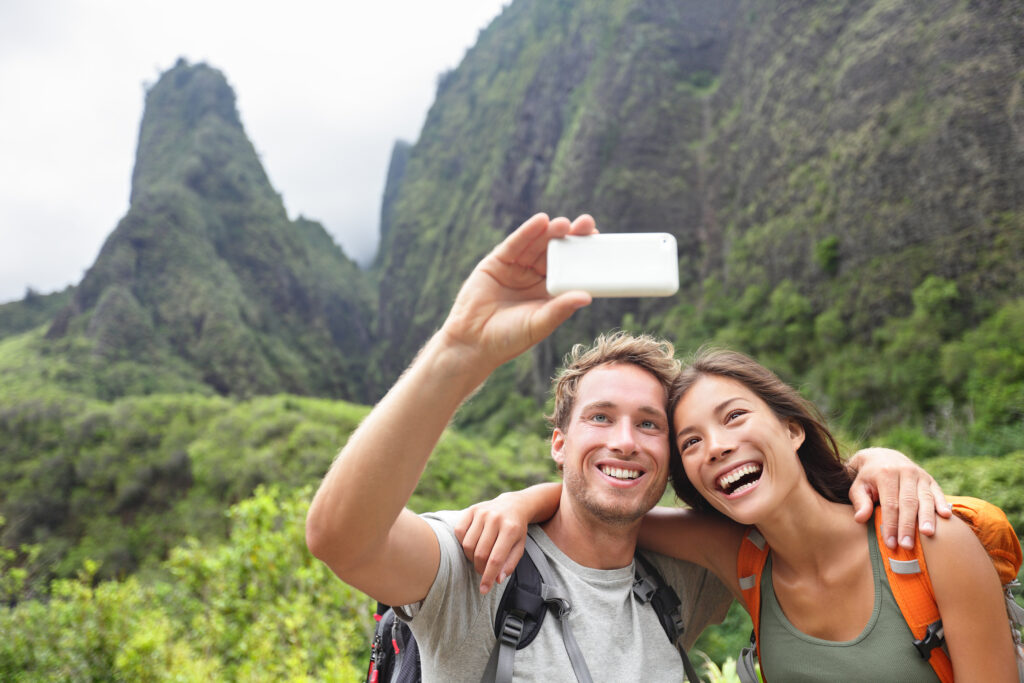
Tourists having selfie photo with iconic photo taking in Hawaii. Woman and man take selfies photo with smart phone camera. Tourists Visiting Iao Valley State Park, Wailuku, Maui, Hawaii, USA
Introduction: A Sacred Haven of Nature
Nestled in the lush heart of Maui, Iao Valley State Park stands as a testament to the island's natural and ecological diversity. At 4,000 acres, this valley offers a window into Hawaii's rich history and geological wonders. In the course of this stunning landscape is the iconic Iao Needle, a towering emerald pinnacle that rises 1,200 feet from the valley floor, dominating a vista and beyond.
The park isn't just a feast for the eyes; it's also a place of profound cultural significance for Native Hawaiians. Whether you're strolling through its tranquil paths, swimming in the refreshing Iao Stream, or reflecting on the sacred past, the valley offers an experience that lingers long after your visit.
The Natural Beauty of Iao Valley
A Lush Wonderland
The valley is filled with lushness, teeming with native Hawaiian plants, vibrant flowers, and cascading streams. The valley's rich vegetation thrives in its tropical climate, creating a verdant paradise. The mist that often shrouds the mountain peaks, especially after rainfall, adds an ethereal quality to the landscape, making it a favorite spot for photographers alike.
The Iao Stream (Wailuku), the main freshly (Wailuku), is a central park attraction that runs directly from the valley floor. Formed by erosion over centuries, the needle is not only geological marvel but also a site of deep cultural and historical significance. Ancient Hawaiians considered it a sacred place, and its presence adds a mystical aura to the valley. Visitors can see this natural wonder from various vantage points throughout the park.
A Walk Through History
The Battle of Kepaniwai
Iao Valley is not just a place of natural beauty; it's also steeped in history. In 1790, it was the site of the pivotal Battle of Kepaniwai, where King Kamehameha I fought to unify the Hawaiian islands. The battle was a significant milestone in Hawaiian history, and the valley's serene beauty today stands in stark contrast to its tumultuous past. The valley offers a peaceful reminder of Hawaii's tumultuous past, offering visitors a chance to reflect on its history.
Heritage Gardens
Beyond the natural splendor, the Hawaiian Heritage Gardens feature a beautiful and educational display of the various cultures that have shaped Hawaii. The gardens feature traditional structures, plants, and artifacts representing Hawaiian, Chinese, Japanese, Korean, Portuguese, and New England cultures, providing a deeper understanding of the island's multicultural heritage. It's a serene spot to stroll, as visitors walk into harmonious coexistence.
Activities and Highlights
Scenic Trails
Iao Valley State Park offers several short but rewarding trails that showcase its natural beauty. The most popular is the Iao Needle Lookout Trail, a paved path that leads to the iconic viewpoint. Along the way, interpretive signs provide insights into the valley's history, geology, and flora, enriching your journey.
For those seeking a more immersive experience, the trails that meander along the Iao Stream offer opportunities to explore the valley's lush greenery and cool off in the refreshing waters. The sound of the bubbling stream and the rustle of leaves create a tranquil ambiance that's perfect for reconnecting with nature.
Birdwatching and Wildlife
The park is home to a variety of native birds, including the 'apapane and 'amakihi, which can often be spotted flitting through the trees. Keep an eye out for colorful butterflies and other small wildlife that add to the valley's enchanting atmosphere.
Photography
With its dramatic landscapes, Iao Valley State Park is a dream for photographers. The interplay of light and shadow across the cliffs, the vibrant greens of the vegetation, and the ever-changing mist around the Iao Needle create countless opportunities for stunning shots. Sunrise and early morning are particularly magical times to capture the valley's beauty.
Why Visit Iao Valley State Park?
A Blend of Nature and Culture
Iao Valley State Park offers a rare combination of natural beauty and cultural depth. Its lush landscapes and dramatic vistas provide a feast for the senses, while its historical and cultural significance adds layers of meaning to your visit.
A Place of Peace and Reflection
In addition to its visual appeal, the valley has a tranquil energy that invites contemplation and relaxation. Whether you're walking along the stream, pausing at the lookout, or exploring the heritage gardens, Iao Valley provides a sense of peace that's hard to find elsewhere.
Easy Accessibility
Located just a short drive from the town of Wailuku, Iao Valley State Park is one of Maui's most accessible attractions. Its manageable trails and compact layout make it an ideal destination for travelers of all ages and abilities.
Conclusion: Your Gateway to Maui's Magic
Iao Valley State Park is a place where the natural world and Hawaiian heritage come together to create something truly special. From the towering Iao Needle to the serene heritage gardens, every corner of this park offers an opportunity to connect with Maui's spirit and beauty.
Whether you're a first-time visitor to Hawaii or a seasoned traveler, Iao Valley State Park is a destination that promises to inspire, educate, and enchant. Pack your sense of wonder, and let this sacred valley become one of the highlights of your Hawaiian adventure.
Haleakalā National Park
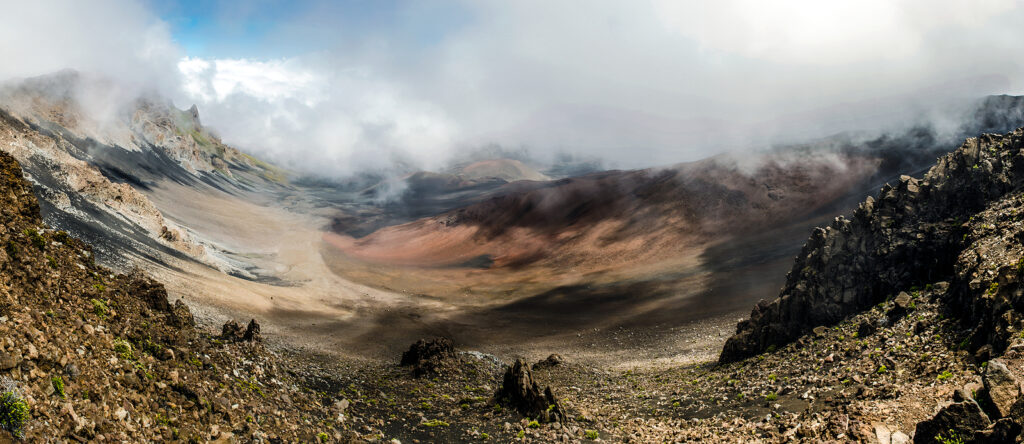
Haleakalā National Park is an American national park located on the island of Maui in the state of Hawaii.
A Journey to the Heart of Maui's Majesty
Introduction: The Call of the House of the Sun
Perched high above the island of Maui, Haleakalā National Park offers an extraordinary blend of natural beauty, cultural significance, and outdoor adventure. Known as the `House of the Sun` in Hawaiian mythology, this park invites visitors to explore its vast volcanic landscapes, lush rainforests, and stunning celestial vistas. Whether you're drawn to the surreal beauty of a sunrise, the cascading waterfalls of its rainforest trails, or the chance to stargaze under some of the clearest skies on Earth, Haleakalā National Park promises an unforgettable experience.
Haleakalā Crater: A Volcanic Masterpiece
Exploring the Sliding Sands Trail
The Haleakalā Crater is a geological wonder spanning nearly seven miles in diameter and plunging more than 2,600 feet deep. Its barren, otherworldly terrain is punctuated by cinder cones in shades of red, orange, and gray, creating a surreal landscape.
The Sliding Sands Trail (Keoneheʻeheʻe) is one of the most popular ways to explore the crater. This challenging hike descends into the heart of the volcanic basin, offering up-close views of its unique features. As you walk, the silence is profound, broken only by the crunch of gravel beneath your boots and the occasional call of a bird. For those who prefer a shorter hike, turning back after the first mile or two still provides a taste of this extraordinary environment.
The Silversword: A Botanical Gem
Within the crater, visitors may encounter the Haleakalā silversword (ʻāhinahina), a rare and striking plant found nowhere else on Earth. Its silvery leaves reflect the sun, and its towering flower stalk blooms just once in its lifetime. This remarkable plant thrives in the harsh volcanic environment, adding a touch of life to the stark landscape.
The Kipahulu District: A Tropical Paradise
Pipiwai Trail and Waimoku Falls
Located on the southeastern side of the park, the Kipahulu District offers a lush contrast to the arid summit. This area is home to the Pipiwai Trail, a 4-mile round-trip hike that winds through bamboo forests and past cascading waterfalls. The trail culminates at Waimoku Falls, a 400-foot cascade that's as mesmerizing as it is majestic. Walking through the bamboo grove, with sunlight filtering through the towering stalks and the sound of leaves rustling in the breeze, is an unforgettable experience.
The Pools of ʻOheʻo
Also known as the Seven Sacred Pools, the Pools of ʻOheʻo are a series of tiered pools fed by waterfalls. Surrounded by lush greenery, these pools are a favorite spot for relaxation and photography. While swimming is sometimes restricted due to safety concerns, the area remains a serene and picturesque highlight of the Kipahulu District.
Flora and Fauna: A Natural Sanctuary
Unique Ecosystems
Haleakalā National Park encompasses a wide range of ecosystems, from subalpine shrublands at the summit to tropical rainforests in Kipahulu. This diversity supports an impressive array of plant and animal life, much of it endemic to Hawaii.
Endangered Species
The park is a refuge for endangered species, including the Hawaiian goose (nēnē) and the Hawaiian petrel (ʻuaʻu). Birdwatchers and nature enthusiasts often delight in spotting these rare creatures, which are protected within the park's boundaries.
Activities for Every Adventurer
Hiking and Beyond
Haleakalā National Park offers over 30 miles of trails, ranging from short, accessible walks to challenging backcountry routes. Beyond hiking, visitors can enjoy picnicking, photography, and educational programs led by park rangers.
Camping Under the Stars
For those who want to extend their stay, the park offers wilderness camping and cabins. Spending the night here provides the unique opportunity to stargaze and wake up to the quiet beauty of Haleakalā's landscapes.
Tips for Visiting Haleakalā National Park
Plan Ahead: Sunrise reservations are required, and it's wise to check weather conditions and park alerts before your visit.
Dress in Layers: Temperatures at the summit can drop below freezing, especially in the early morning. Dressing in layers ensures comfort as the day warms up.
Stay Hydrated: The high altitude can cause dehydration and fatigue, so carry plenty of water.
Respect the Land: As a sacred site in Hawaiian culture, visitors are encouraged to tread lightly and show respect for the environment.
Cultural Significance: The Spirit of the Land
Haleakalā is deeply woven into Hawaiian mythology and culture. According to legend, the demigod Maui lassoed the sun from the summit to slow its journey across the sky, bringing longer days to the islands. This connection to ancient stories and traditions makes a visit to Haleakalā not just a journey through nature but also a journey into the heart of Hawaii's cultural heritage.
Cultural Significance: The Spirit of the Land
Haleakalā National Park is more than a destination—it's a place of wonder, reflection, and connection. Whether you're watching the sunrise from above the clouds, hiking through the lush rainforests of Kipahulu, or marveling at the stars, Haleakalā offers moments that will stay with you forever. For those planning a trip to Hawaii, this extraordinary park is a must-visit, offering a unique blend of natural beauty, adventure, and cultural significance. Let Haleakalā be the highlight of your Maui journey, a place where memories are made and the spirit of aloha comes alive.
Whale Watching on Maui
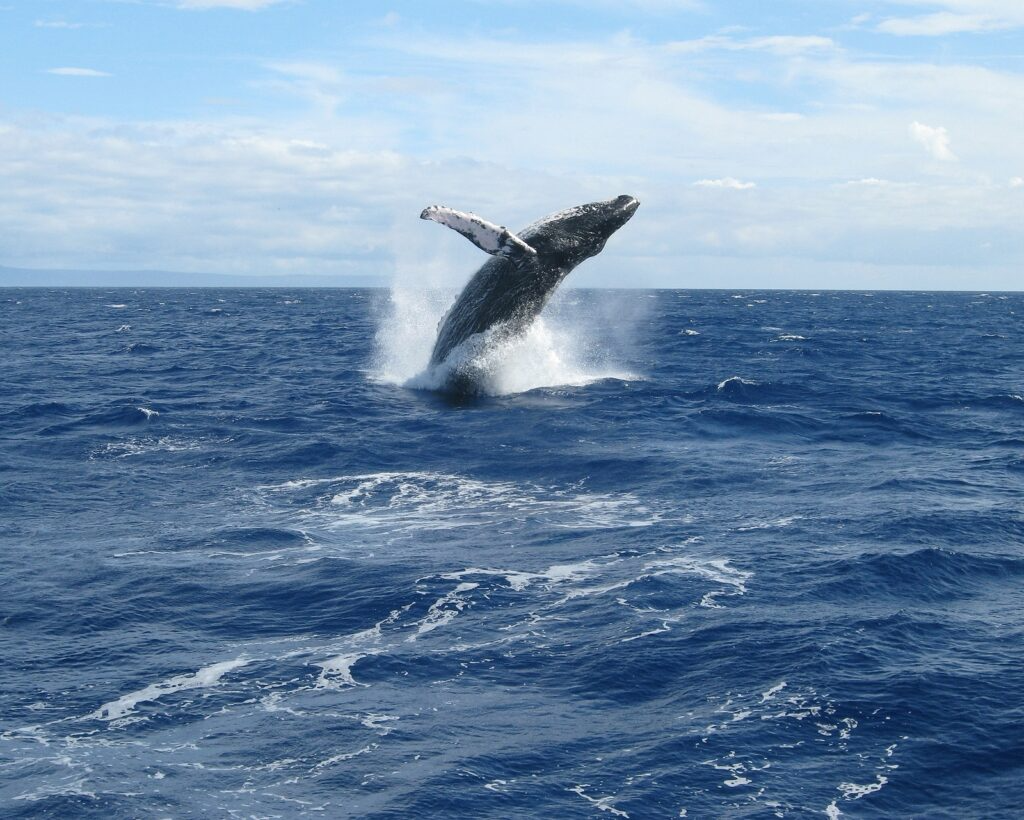
Landscape view of a Humpback Whale breaching in the waters of West Maui, Hawaii
Introduction: A Journey Into the World of Giants
Every winter, Maui transforms into one of the world's premier destinations for whale watching. From December to April, thousands of humpback whales (kohola) migrate to Hawaii's warm waters to mate, give birth, and nurture their young. These magnificent creatures, some weighing as much as 40 tons, make Hawaii their temporary home, offering visitors an unparalleled opportunity to witness their awe-inspiring beauty.
Whale watching on Maui isn't just an activity; it's an experience that connects you to the rhythms of the natural world. Whether you're gazing at a breach from the shoreline or venturing out on a guided tour, encountering these gentle giants is a memory that will stay with you forever.
Why Maui is a Whale Watching Paradise
The Hawaiian Humpback Whale Sanctuary
Maui's waters are part of the Hawaiian Islands Humpback Whale National Marine Sanctuary, a protected area dedicated to preserving the habitat of these endangered whales. The shallow, warm waters between Maui, Lanai, and Molokai provide an ideal environment for humpback whales to breed and nurse their calves.
With its calm seas and abundant marine life, Maui offers some of the best whale-watching opportunities in the world. The island's infrastructure, including expert-led tours and educational programs, ensures that visitors can enjoy these experiences responsibly and sustainably.
The Humpback Whale Migration
Each year, humpback whales embark on an epic journey of 3,000 miles from the cold, nutrient-rich waters of Alaska to the balmy seas of Hawaii. This migration is one of nature's most remarkable phenomena, driven by the whales' need to reproduce and care for their young in a safe environment.
Maui's coastline becomes a front-row seat to this incredible spectacle, with opportunities to observe behaviors like breaching, tail slapping, and nurturing calves.
The Best Ways to Experience Whale Watching on Maui
1. Boat Tours: Up Close and Personal
Joining a guided boat tour is one of the most exciting ways to experience whale watching. Maui's tour operators offer a range of options, from large catamarans to intimate rafts, ensuring there's something for every preference.
What to Expect on a Tour
Expert Narration: Marine naturalists on board provide fascinating insights into whale behavior, biology, and conservation.
Close Encounters: While operators adhere to strict guidelines to respect the whales, the curious giants often approach the boats, creating magical moments.
Guaranteed Sightings: Many tours offer guarantees, ensuring you'll have the chance to see whales or rebook for free.
Popular departure points include Lahaina Harbor, Ma'alaea Harbor, and Ka'anapali Beach, each offering easy access to prime whale-watching waters.
2. Kayaking: A Quiet Connection
For a more intimate and eco-friendly experience, consider a whale-watching kayak tour. Paddling through Maui's serene waters offers a unique perspective and the chance to connect with nature on a deeper level. The gentle sounds of the ocean and the sight of a whale surfacing nearby create moments of pure tranquility.
Kayak tours are typically led by experienced guides who ensure safety and share valuable knowledge about the whales and their environment.
3. Whale Watching from Shore
If you prefer to keep your feet on solid ground, Maui's coastline offers numerous vantage points for spotting whales. Some of the best places to whale watch from shore include:
McGregor Point Lookout: Located near Ma'alaea, this popular spot features a viewing platform with interpretive signage.
Ka'anapali Beach: This iconic beach provides stunning views and frequent whale sightings, especially in the morning.
Kapalua Bay: Nestled on Maui's northwest coast, this serene bay is a favorite for spotting whales close to shore.
Bring binoculars for a closer look and be prepared for the occasional spectacular breach or tail slap.
Witnessing Whale Behaviors: Nature's Spectacle
Breaching
One of the most dramatic and awe-inspiring behaviors, breaching occurs when a whale propels itself out of the water and crashes back down with a massive splash. Scientists aren't entirely sure why whales breach, but theories range from communication to playfulness.
Tail and Fin Slapping
Humpbacks often slap their tails or fins against the water's surface, creating loud, resounding echoes. These displays may serve as a form of communication or a way to ward off potential threats.
Spyhopping
When a whale pokes its head above the water, appearing to "spy" on its surroundings, it's known as spyhopping. This behavior offers a glimpse of the whale's inquisitive nature.
Mothers and Calves
One of the most heartwarming sights is observing a mother humpback and her calf. Mothers are highly attentive, guiding and protecting their young as they learn to navigate the ocean.
The Magic of Whale Songs
Haleakalā is deeply woven into Hawaiian mythology and culture. According to legend, the demigod Maui lassoed the sun from the summit to slow its journey across the sky, bringing longer days to the islands. This connection to ancient stories and traditions makes a visit to Haleakalā not just a journey through nature but also a journey into the heart of Hawaii's cultural heritage.
When to Go Whale Watching on Maui
The prime whale-watching season on Maui runs from December to April, with the peak months being January through March. During this time, the waters are teeming with activity, and sightings are almost guaranteed. Early morning tours are often the best choice for calm seas and optimal lighting.
Tips for an Unforgettable Experience
The prime whale-watching season on Maui runs from December to April, with the peak months being January through March. During this time, the waters are teeming with activity, and sightings are almost guaranteed. Early morning tours are often the best choice for calm seas and optimal lighting.
The Spirit of Aloha: Respecting the Whales
Whale watching is not just about seeing these majestic creatures; it 's about understanding and respecting them. The whales are a vital part of Hawaii's marine ecosystem and hold deep cultural significance in Hawaiian traditions. Practicing malama 'āina (caring for the land and sea) ensures that future generations can continue to experience the wonder of whale watching on Maui.
Why Whale Watching on Maui Should Be on Your Bucket List
Whale watching on Maui is a unique and transformative experience that offers more than just incredible sights. It's an opportunity to connect with nature, learn about marine conservation, and witness one of the ocean's most magnificent creatures in its natural habitat.
Whether you're marveling at a breaching whale from the deck of a catamaran, paddling alongside one in a kayak, or spotting one from a scenic lookout, each encounter is a reminder of the beauty and fragility of our planet.
Conclusion: An Invitation to Witness the Extraordinary
Whale watching on Maui is an adventure that captivates the heart and soul. It's a celebration of life, a reminder of the ocean's mysteries, and a chance to create memories that will last a lifetime.
If you're planning a trip to Hawaii, make whale watching a centerpiece of your journey—it's an experience you'll cherish forever. The whales are waiting, and Maui's waters are calling. Will you answer?
Road to Hana: The Ultimate Hawaiian Adventure
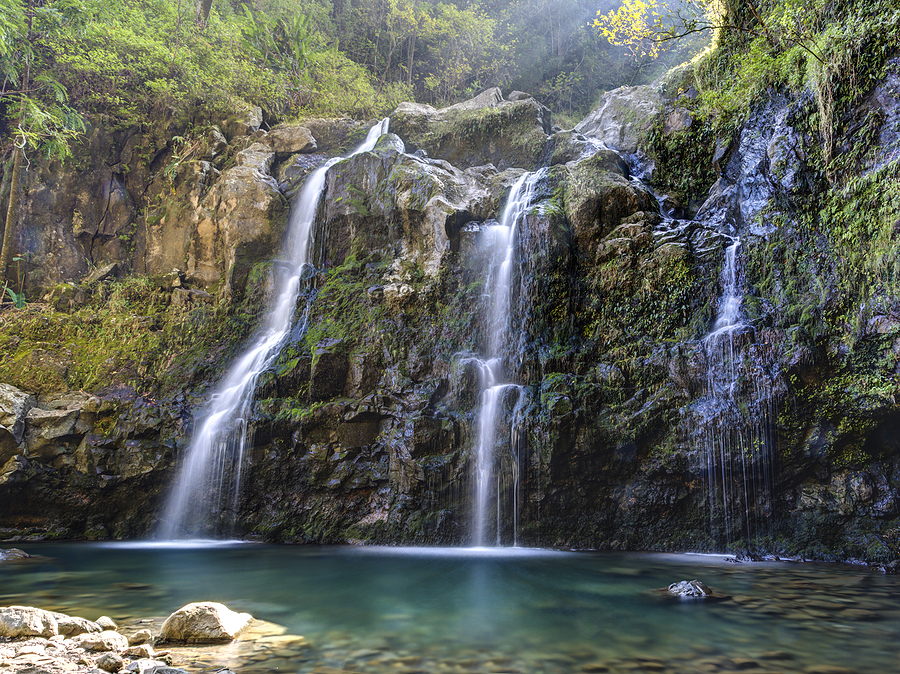
Road to Hana - Maui Hawaii. This winding road travels through one of the truly last undeveloped tropical areas of the island
Introduction: A Journey Through Paradise
The Road to Hana is more than just a scenic drive; it's an unforgettable journey that takes you deep into the heart of Maui's natural beauty and cultural charm. This iconic 64-mile stretch of Hana Highway winds along Maui's rugged northeastern coast, offering travelers breathtaking views, cascading waterfalls, lush rainforests, and a glimpse into the island's rich history.
Whether you're a seasoned adventurer or someone seeking to immerse yourself in Hawaii's serene landscapes, the Road to Hana promises an experience unlike any other. It's not about the destination—it's about the journey and the countless treasures you'll discover along the way.
The Road Less Traveled: What Makes the Road to Hana Special
A Scenic Marvel
The Road to Hana is often described as one of the most beautiful drives in the world, and it's easy to see why. With over 600 curves and 50 narrow bridges, the highway hugs the coastline, revealing dramatic ocean views on one side and dense tropical forests on the other. Every twist and turn brings a new surprise, whether it's a hidden waterfall, a black sand beach, or a panoramic vista of the Pacific Ocean.
An Immersion in Nature
This journey is a celebration of Maui's unparalleled natural diversity. Along the way, you'll encounter everything from bamboo forests and volcanic rock formations to exotic flowers and native wildlife. It's an ideal adventure for nature lovers, photographers, and anyone looking to escape the ordinary.
Must-See Stops Along the Road to Hana
While the entire journey is filled with wonders, there are several stops that stand out as must-visit destinations. From natural attractions to cultural sites, these highlights offer a comprehensive experience of the Road to Hana's diverse offerings.
Some of the most popular stops include the Twin Falls, the Garden of Eden Arboretum, Waikamoi Nature Trail, Keanae Peninsula, Wailua Valley State Wayside, Wailua Falls, Hana Lava Tube, Waianapanapa State Park with its famous black sand beach, and the Seven Sacred Pools at Oheo Gulch.
Each of these locations offers its own unique charm and beauty, from the refreshing swimming holes at Twin Falls to the otherworldly landscape of Waianapanapa's black sand beach. Taking the time to explore these stops allows you to fully appreciate the rich tapestry of experiences that the Road to Hana has to offer.
Tips for an Unforgettable Road to Hana Experience
To make the most of your Road to Hana adventure, consider these practical tips:
Start Early: Begin your journey at sunrise to maximize daylight hours and avoid crowds.
Take Your Time: Plan for a full day (or even better, an overnight stay) to truly appreciate the journey without rushing.
Download a Guide: Several apps and audio guides are available that provide narration and insights about each stop along the way.
Pack Essentials: Bring water, snacks, insect repellent, swimwear, towels, and a camera.
Respect Local Customs: Many areas along the Road to Hana are sacred to Native Hawaiians. Always show respect and follow posted guidelines.
Drive Safely: The road is narrow and winding. Drive cautiously, use pullouts to let locals pass, and never park illegally.
Beyond the Road: Exploring Hana Town
While the journey itself is the main attraction, the town of Hana offers its own charms worth exploring. This peaceful community provides a glimpse into a more traditional Hawaiian lifestyle, far removed from the bustling tourist centers of the island.
Visit the Hana Cultural Center to learn about the area's rich history, relax on the red sand beach of Kaihalulu, or explore the lush grounds of Kahanu Garden, home to Pi'ilanihale Heiau, the largest ancient temple in Hawaii.
If time allows, consider spending a night in Hana to experience the area's tranquility and to break up the round-trip drive. Accommodations range from luxury resorts to cozy vacation rentals, offering options for every preference and budget.
The Road Less Traveled: The Back Road to Hana
For adventurous travelers, the "back road" to Hana offers an alternative route for the return journey. This unpaved section of highway circles around the backside of Haleakalā, providing dramatic landscapes of Maui's rugged southern coast.
While stunningly beautiful, this route is more remote and rugged, with sections that may not be covered by rental car insurance. Research thoroughly and check current conditions before attempting this route.
Preserving Paradise: Responsible Tourism on the Road to Hana
As one of Maui's most popular attractions, the Road to Hana faces challenges from overtourism. Visitors can help preserve this special place by practicing responsible tourism:
Stay on marked trails and respect private property.
Pack out all trash and leave no trace.
Support local businesses along the route.
Be mindful of noise levels and the peaceful atmosphere.
Consider joining a guided tour to reduce traffic and support local guides.
Conclusion: A Journey to Remember
The Road to Hana is more than just a scenic drive—it's a journey into the heart and soul of Maui. It offers a rare opportunity to step back from the fast pace of modern life and connect with the natural beauty and cultural richness that make Hawaii so special.
Whether you're chasing waterfalls, swimming in natural pools, hiking through bamboo forests, or simply soaking in the breathtaking views, the Road to Hana creates memories that will last a lifetime. It's not just about checking off a bucket list item; it's about embracing the spirit of adventure and discovery that makes travel so rewarding.
So take your time, savor each moment, and let the Road to Hana reveal its wonders at its own pace. After all, in Hawaii, it's not the destination that matters most—it's the journey and the aloha spirit you'll find along the way.
Small Group Pearl Harbor Memorial Tours From
Daniel K. Inouye International Airport
